At first glance, it's clear that the TCL A300 NXTVision wants to be more than just an ordinary television. It offers an image display mode that – unlike its competitors from Korea, Samsung The Frame – is completely free of charge. Additionally, like its rivals, freebies are included. In the package, in addition to the television, we find extra frames imitating light wood as well as a flat wall mount, allowing the television to truly resemble a gallery piece. In terms of everyday use, the Google TV system makes the biggest impression – it's extensive, fast, and offers access to a vast number of applications. And if we feel like stepping out of the digital museum and jumping straight into the gaming world, the A300 can surprise us. Two HDMI 2.1 ports, 144 Hz, VRR, ALLM, and very low input lag mean that even demanding gamers can feel at home here. Well... maybe except for those who are sensitive to ghosting – because that's still one of the model's major issues. There are also downsides. Although the picture mode is free – and that's worth appreciating – the quality of the available graphics clearly falls short of what Samsung offers in its paid ART Store. The images displayed resemble photos rather than realistic reproductions of artworks. Unfortunately, the A300 – like the competing Hisense S7NQ – performs poorly in this regard and additionally has some software issues. The brightness of the television itself also leaves much to be desired – it is the darkest television of the entire “frame trio,” which translates to average experiences during the day and limited HDR effects. Nevertheless, the TCL A300 NXTVision is a quite reasonable alternative to Samsung The Frame or S7NQ – especially if we are looking for a more affordable solution without additional fees for access to the "gallery" mode and with an operating system that doesn't limit us in terms of the number of applications. However, it should be noted that this is a proposition with a lot of compromises. If we want to save a bit and aren’t expecting top-end picture quality, then the A300 could be a picture-perfect choice. Otherwise, it’s worth looking at its competition.
- Matching (Score)
- Our verdict
- TV appearance
- Where to buy
- Contrast and black detail
- HDR effect quality
- Factory color reproduction
- Color reproduction after calibration
- Smoothness of tonal transitions
- Image scaling and smoothness of tonal transitions
- Blur and motion smoothness
- Console compatibility and gaming features
- Input lag
- Compatibility with PC
- Viewing angles
- Daytime performance
- Panel details
- TV features
- Apps
- Playing files from USB
- Sound
TCL A300W NXTVision vs Xiaomi S Pro 2026
Direct comparison
A300W / A300W PRO / NXTVision

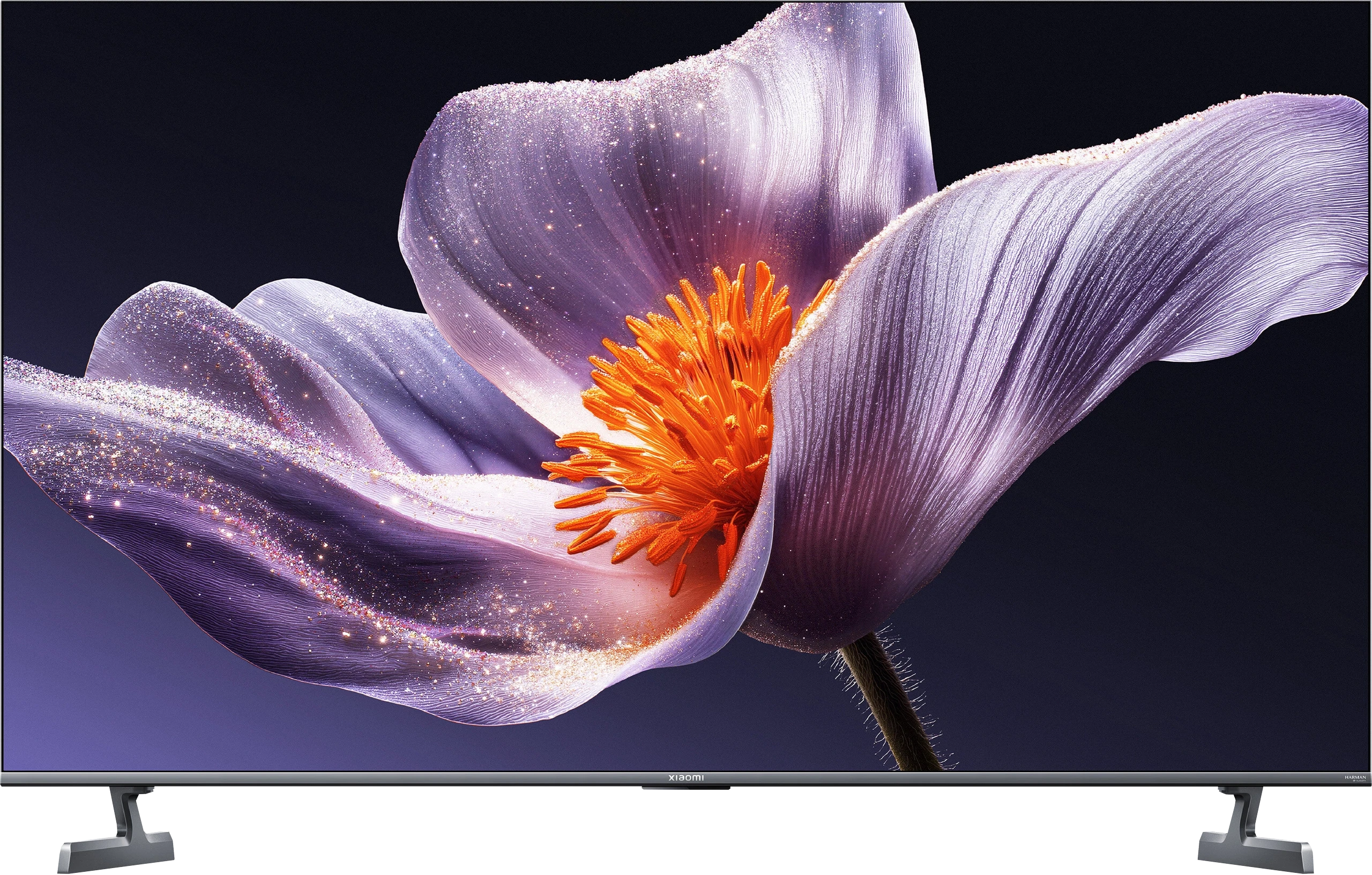
Panel type: LCD VA
Resolution: 3840x2160
System: Google TV
Model year: 2024
Complete the survey to find out the result

Resolution: 3840x2160
System: Google TV
Model year: 2025
Complete the survey to find out the result

Overall rating
6.5
7.2
Movies and series in UHD quality
6.3
6.7
Classic TV, YouTube
6.0
6.3
Sports broadcasts (TV and apps)
5.9
6.4
Gaming on console
8.2
7.7
TV as a computer monitor
8.2
8.6
Watching in bright light
4.7
7.4
Utility functions
7.0
7.2
Apps
9.6
9.6
Sound quality
6.0
7.1
Complete the survey to find out what fits your preferences
Advantages
Frames styled like a painting included
Mount included
VA matrix with decent contrast
Supports all popular HDR formats, including Dolby Vision and HDR10+
Great for gamers: VRR, G-Sync, ALLM, low input lag
High refresh rate - 144Hz
Free "picture mode"
Supports DTS:X and Dolby Atmos
GoogleTV operating system with the largest app base
Good black levels and contrast (SDR)
Very high peak brightness (great for a bright living room)
Complete package for gamers (144 Hz panel, HDMI 2.1, VRR)
Extremely low input lag in SDR mode (below 10 ms)
Surprisingly good, strong sound (branded with Harman Kardon)
Support for Dolby Atmos and DTS:X
Rich Google TV system (with AirPlay and Chromecast)
Proper compatibility with PC (clear fonts and 288Hz mode)
Outstanding price-to-specification ratio
Disadvantages
Low brightness
Motion blur issues
Missing USB recording feature or PiP
Worse image quality in "art mode" than Samsung The Frame
Colors and blacks significantly fade under sunlight
No VESA standard
Software bugs
Local dimming algorithms practically do not work in HDR content
Useless Dolby Vision Gaming mode (input lag approx. 100 ms)
Poorly implemented HGiG mode
Strongly visible banding (color stepping) in dark scenes
Very weak upscaling and digital image processing
Google TV can "stutter"
Our verdict
Is it worth buying the Xiaomi S Pro 2026? The answer to this question is quite complicated. Let's start with what's really great about this TV. First of all, the Xiaomi S Pro 2026 has an excellent price-to-performance ratio. We get a Mini LED panel with very high brightness, which handles well in a sunlit living room. Additionally, it has a fast 144 Hz (or even 288 Hz) display and a complete package for gamers: two HDMI 2.1 ports, support for VRR, and an impressively low input lag (under 10 ms). If we mainly watch "regular" content and play games, this is truly a fantastic screen. Even the built-in 30W speakers are surprisingly good and support Dolby Atmos. Unfortunately, there’s also a second, very problematic side to this model. In short: the software. We have the impression that Xiaomi has given us great "parts," but couldn't get them to work together correctly. The biggest problem is the HDR mode – the main reason one buys a TV today. For unknown reasons, the TV in HDR mode (HDR10, Dolby Vision) does not manage its dimming zones well. As a result, the black, which should be deep, becomes gray or bluish like in a regular LCD TV. There are also other software issues, such as the terrible implementation of HGiG or the fact that the Dolby Vision mode for gamers is useless due to enormous input lag (100 ms). Furthermore, the TV's capability for digital image processing is very poor. So how do we summarize this in terms of price? In its price class, the Xiaomi S Pro 2026 crushes the competition in terms of specifications. Other TVs for this money are usually simple LCD models without dimming, often only with a 60 Hz panel. The question then is: what is more important to you? If you are simply looking for a very bright and cheap TV for watching television during the day and gaming, and you are willing to calibrate it – you will be very satisfied with it. However, if you are looking for a TV to enjoy spectacular HDR in movies and games straight out of the box, you will be terribly disappointed with this model. In this case, in our opinion, it is better to pay a little more for a basic OLED TV or a more refined Mini-LED model from the competition.
TV appearance








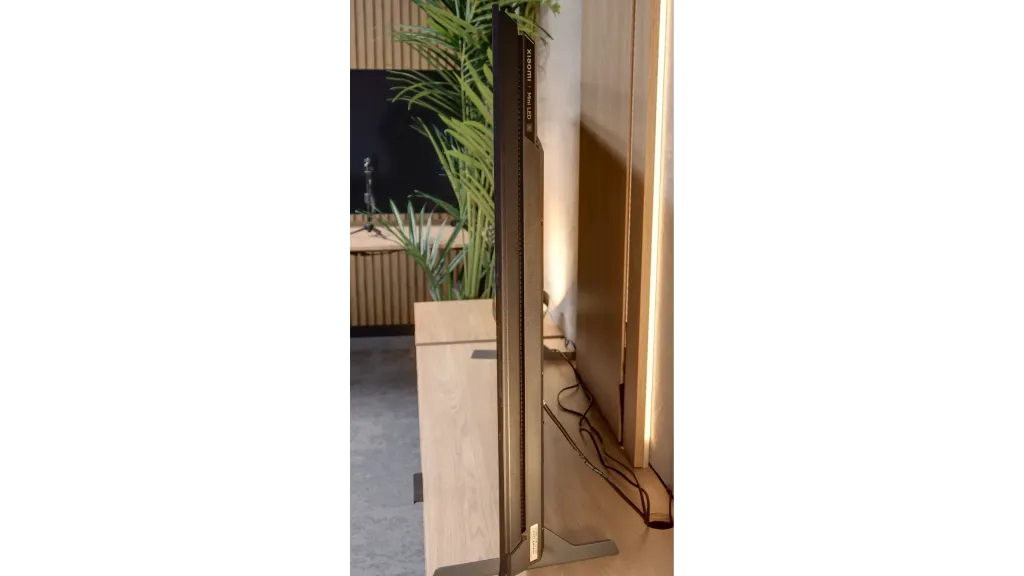

Contrast and black detail
5.5/10
7.4/10
Local dimming function: No
Local dimming function: Yes, number of zones: 532 (28 x 19)
Contrast:

Result
5,000:1

Result
5,450:1

Result
3,800:1

Result
4,000:1

Result
3,950:1

Result
1,001,650:1

Result
52,600:1

Result
17,900:1

Result
17,200:1

Result
10,150:1
Halo effect and black detail visibility:


TCL A300, also known as NXTVision, uses a VA panel, so right from the start, decent contrast could be expected. In our test patterns, the television did indeed show typical results for this type of panel – in the best case, the contrast reached about 5000:1, which is not a bad result for this segment.
However, it should be noted that the model is not equipped with any local dimming technology, which unfortunately shows in practice. Black, although at times quite deep, often shifts to blue or gray – especially in darker scenes. In short: for a television without local dimming, it's not bad, but there’s no point in comparing it to models that already have that feature on board.
Let's get to the point, which is what is most important in the Mini LED panel: black levels and contrast. The Xiaomi S Pro 2026 is built on a VA matrix, which right from the start promises deep blacks. Let's add to that Mini LED backlighting with a very large number of local dimming zones. In the 65-inch variant we tested, we counted as many as 532 of them. That's a solid number that should provide precise control over the backlighting. It should be noted that this number is proportional to the size—choosing the smaller 55-inch variant will result in correspondingly fewer zones, while larger models will have more.
So, how does the black level perform on the S Pro 2026? The answer is complex.
Generally, it's really not bad, and we see a clear improvement compared to the problematic model from 2025. As you can see in our measurement charts, the results are occasionally spectacular. In most of the film scenes we measured in SDR (standard dynamic range), the contrast could be confidently described as very good and even comparable to constructions three times more expensive. Well, it could be... and this brings us to the paradox of this model. The problem lies in how the TV manages zones in scenarios other than SDR. As soon as we feed the TV a higher quality signal, such as an HDR series or Dolby Vision from streaming platforms (Netflix, HBO Max, or Disney+), something strange happens. We have an overwhelming impression that the TV suddenly... forgets that it was equipped with local dimming zones at all. As shown in our video below, the black in such scenes resembles more shades of dark gray or navy blue. On top of that, there's a slight flickering of the entire screen. This is the level one would expect from TVs completely devoid of a local dimming system. It seems that Xiaomi decided to fix one, but crucial flaw of last year's 2025 model over the year. And they succeeded – we no longer have the annoying "zone disco," and the picture is stable. It's just a pity that when consuming top-quality content (HDR), the whole advanced system becomes completely useless.
HDR effect quality
5/10
6.3/10
Luminance measurements in HDR:

Result
357 nit

Result
348 nit

Result
338 nit

Result
350 nit

Result
389 nit

Result
809 nit

Result
526 nit

Result
1033 nit

Result
469 nit

Result
718 nit
Scene from the movie “Pan” (about 2800 nits)


Scene from the movie “Billy Lynn” (about 1100 nits)


Static HDR10


Dynamic: Dolby Vision
Dynamic: Dolby Vision


HDR luminance chart:
Xiaomi S Pro 2026
HDR luminance
TCL A300W NXTVision
HDR luminance
When it comes to brightness, the TCL A300W is definitely the darkest TV among all frame-style models, such as Samsung The Frame or Hisense CanvasTV – and unfortunately, this is immediately noticeable. In our measurements, the peak luminance reached only about 400 nits, and on test film screens, this value dropped to 350 nits. This is definitely too little to feel the true "magic" of bright HDR effects. As a consolation – the TV is equipped with a PFS LED coating (which is something like QLED), which provides very good coverage of a wide color palette, both DCI-P3 and BT.2020. Additionally, there is full support for all popular HDR formats – HDR10, HDR10+, HLG, and Dolby Vision – which somewhat compensates for the shortcomings in brightness and helps improve the overall perception of materials in this quality.
When it comes to HDR quality, the Xiaomi S Pro 2026 is undoubtedly a really bright TV. On our synthetic measurement charts, we were able to generate a peak brightness of around 1400 nits. This is not only a very good result but even spectacular, considering the price of this model. However, as we always repeat, for our editorial team, measurements and experiences from the content we watch every day—movies and series—are more important. So let's analyze how Xiaomi handles film material. Unfortunately, the result is somewhat mixed. When very bright scenes appear on the screen, the S Pro 2026 truly shows its full potential and can achieve real brightness of 800-1000 nits on bright elements. Moreover, even smaller objects can "burn" the eyes— in scenes from the movie Sicario 2, small metallic elements of the helicopter were really bright. The problem is this—and here the story comes full circle back to our assessment of contrast—that in such scenes, we cannot count on absolutely cinematic black. In our opinion, this compromise is too significant; high visibility of details in bright areas should not come at the expense of such a substantial boost in black levels. And even though the HDR effect itself can be striking here, it is important to remember that when very difficult, mixed scenes appear on the screen, we may feel a slight disappointment. Exactly the one we mentioned in the previous paragraph regarding dimming issues in HDR mode. On a positive note, it is worth adding that the S Pro 2026 is equipped with an additional PFS filter (which works similarly to a QLED layer), effectively broadening the color palette coverage. As a result, measurements showed a DCI-P3 color gamut coverage of up to 94%. This gives us the confidence that in most colorful scenes, the image will look rich and appropriately saturated.
Factory color reproduction
5.9/10
4.1/10


Factory Mode
After calibration


Factory Mode
After calibration
TCL A300 offers several picture modes, but without a doubt, the movie mode performs the best. Unfortunately, although it is the best choice among the available options, it is not free from errors. Both in HD and HDR content, the image has a noticeably too warm tint – leaning slightly towards pink, which is particularly noticeable in snowy scenes. Instead of pure white, we get a pinkish hue that spoils the natural perception of colors.
The brightness management doesn't perform well either. For older HD materials, the image often seems too dark – as confirmed by the inflated gamma value. Conversely, with HDR content, the effect is reversed – the image is overly brightened, which we observed in scenes from the movie Pan. This lack of consistency also affects color reproduction accuracy – a test with the ColorChecker showed that many samples deviate significantly from the reference values.
Fortunately, TCL allows manual adjustment of the settings, so we decided to check how the television would perform after our professional calibration. The effects of this correction are described below.
Of course, we conducted all our measurements in "Film" mode, which is usually the best and most accurate choice you get straight out of the box. And we have to say it bluntly: even though this is the best mode, it is still very far from ideal. First of all, the television has a clear tendency to give the image a cool, bluish tint – this is due to a poorly set white balance. Additionally, there is a problem with how the S Pro 2026 manages its brightness right after being taken out of the box, which results in an overly bright image. These two flaws contribute to really huge colorimetric errors (Delta E). In HDR content, they were able to exceed our expected error scale of "10" (meaning values close to 20). For reference – the threshold of perceivable error by the human eye is a Delta E value of around 3. Results at the level of 20 mean that the image significantly deviates from what the director intended.
Color reproduction after calibration
8/10
7.2/10




After our professional calibration, the TCL A300 literally got a new lease on life. The image is no longer too warm, and the colors finally look the way they should – which was confirmed by the ColorChecker test, where the color samples finally started hitting their marks, at least to some reasonable degree. It was also possible to partially correct the brightness management – the image is now more balanced and less "wobbly" between different types of content. Of course, certain limitations cannot be overcome – a slightly noticeable blooming effect still occurs, but that's a characteristic of the technology, not something that can be eliminated even after professional settings.
Generally: after calibration, the A300 looks significantly better and gains a completely new quality.
So how does the S Pro 2026 perform after our calibration treatment? We must admit that after calibration, the television becomes a really pleasant device for watching everyday content. As you can see in the graphs, we managed to bring both white balance and gamma values to nearly perfection in HD (SDR) material. Most importantly, the colorimetric errors have become practically invisible to the human eye. In this scenario, the S Pro 2026 is simply a great television that, after professional calibration, can provide a lot of enjoyment while watching. However, it is worth noting clearly – our efforts helped little in 4K HDR mode. Despite calibration, the television still interprets the image rather strongly "in its own way," which is clearly seen in the measurement of the EOTF curve (luminance tracking). It's a bit of a shame, because this shows that the problem lies not in the panel itself, but in the software. Underdeveloped image management algorithms in HDR content can, unfortunately, disqualify this television for many more discerning users.
Smoothness of tonal transitions
8.6/10
6.9/10












TCL A300 NXTVision is another frame-style television that really handles the smoothness of color transitions well. It's hard to find clear bands or sharp transitions between shades of the same color here – the overall look is natural and smooth.
However, it must be honestly admitted that among the three tested models (The Frame and S7NQ), TCL performs the weakest in this category. In darker and lighter scenes, delicate imperfections can be noticed. Nevertheless, looking at it as a whole, for a TV in this price range – it really presents itself solidly. It may not be the best among all, but it maintains a very good level.
Let’s now move on to the analysis of tonal transitions, meaning the fluidity with which the television can render transitions between closely related shades. In the case of the Xiaomi S Pro 2026, the image that emerges from this is extremely dichotomous. On one hand, we have bright gradations. When scenes with blue skies or other smooth transitions in the bright parts of the image appear on the screen, the S Pro 2026 handles them excellently. They look perfectly smooth, without any visible artifacts.
Unfortunately, the situation changes drastically as soon as dark scenes take over the screen. To put it bluntly – they look really poor. Instead of a smooth tonal transition in the dark, the joins of colors and unsightly "stepping" of gradients are very clearly visible on the screen. In darker films or games, this is very noticeable and can effectively ruin the viewing experience.
Image scaling and smoothness of tonal transitions
5.5/10
4.5/10
Smooth transition function

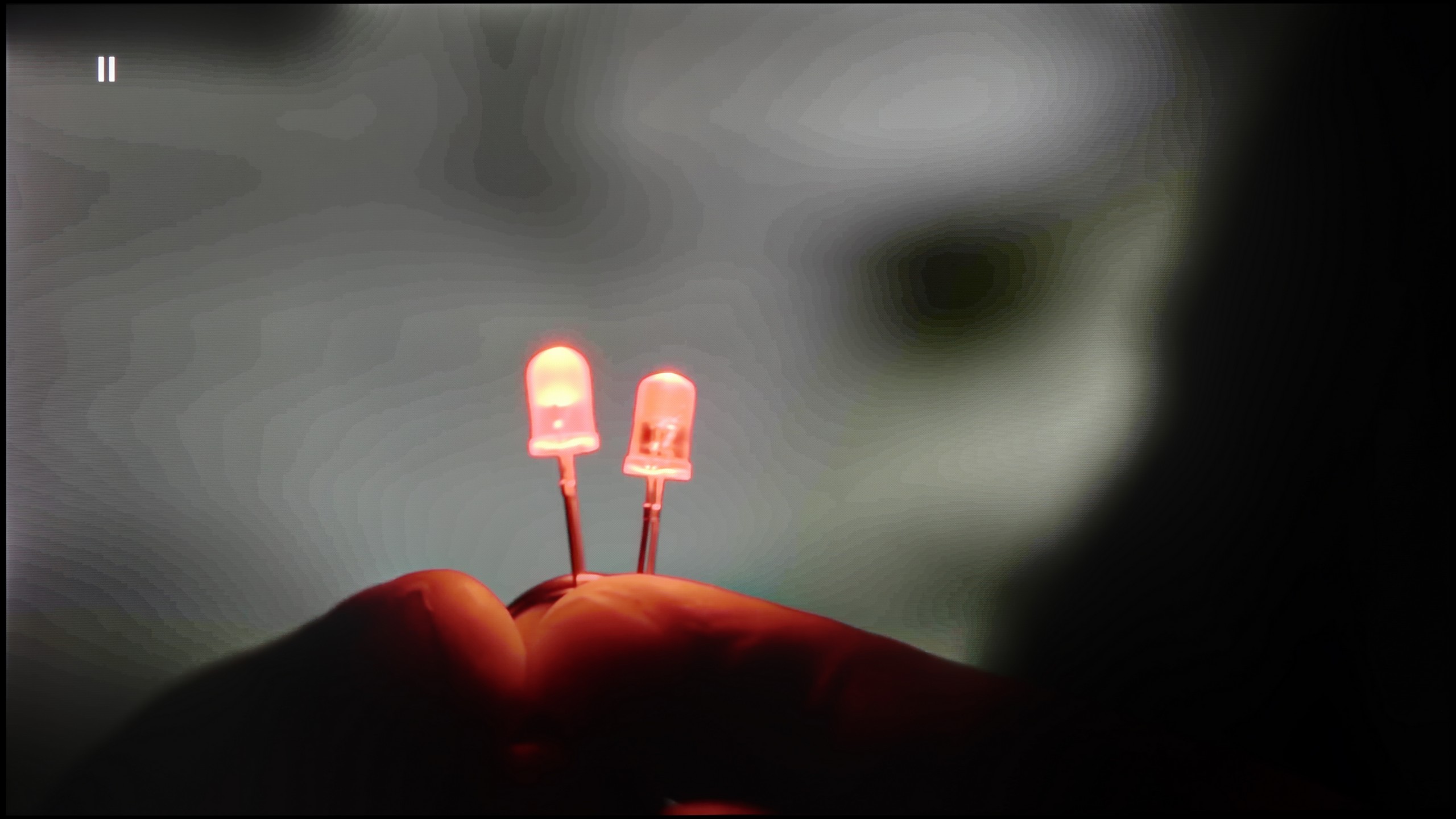
Image without overscan on the SD signal


TCL A300 handles tonal transitions in high-quality films very well, but the question arises – how does it perform with weaker materials? The television is equipped with a tonal transition smoothing feature, but its effectiveness can be described in one word: "random." In one scene it may work and improve the gradation, and when turned off… the effect remains the same. There is a lack of consistency and predictability.
Image scaling is also not one of the A300's strong suits. In the test pattern, the main character actually looked better than on the raw signal, but with thin lines – like fonts or background details – there was noticeable jaggedness and aliasing. On the plus side, the television does not cut off the image and has no issues with overscan, but the overall quality of scaling is rather average.
Let's start with the issue we addressed in the previous paragraph: can a TV even fix the problem of poor tonal transitions in dark scenes? Theoretically, yes – in the menu, we find a feature with the promising name "Color Contour Removal." Well, "theoretically." Unfortunately, in practice, this setting – regardless of which of the three power levels is selected – yielded absolutely no real results. So we have a feature that, in practice, only exists in the menu. Moving on to the quality of upscaling (scaling the image from a lower resolution to 4K), unfortunately, we have more bad news for you. The S Pro 2026 handles this task very poorly. Interestingly, the phenomenon of "overscan" (slight image cropping) is not a big issue here. The problem is that the TV simply displays a very raw, unprocessed image. Its attempt to upscale the signal to a higher resolution looks simply poor and lacks any "smart" enhancement. There is no denying it – the whole digital image processing is the true Achilles' heel of this model.
Blur and motion smoothness
6.4/10
7.5/10

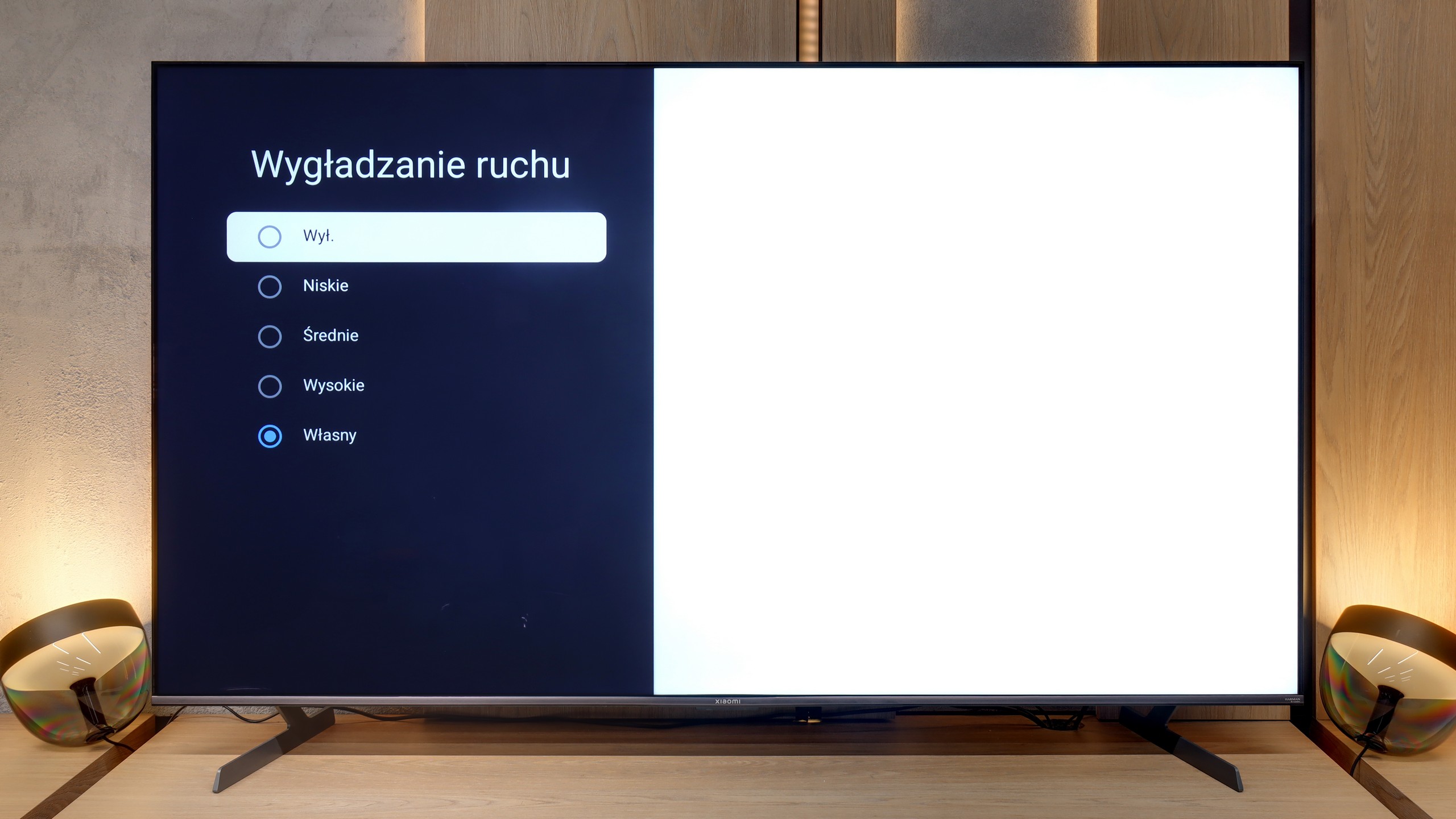
Blur (native resolution, maximum refresh rate):






Smużenie ():
Smużenie (1080p@288Hz):



The TCL A300 is equipped with a 144 Hz panel, which should immediately satisfy practically everyone – both gamers and sports fans. The motion is smooth, and the picture is clear even in fast scenes. Additionally, the television offers a motion enhancement feature called "Motion," where we can find two sliders on a 10-point scale. These allow for adjusting the effect to personal preferences – from a classic, cinematic look with visible frames to a very smooth (though already unnatural) image reminiscent of a soap opera effect. Thanks to this, everyone can find a setting that suits them.
On paper, the specification of the S Pro 2026 looks impressive. The television is equipped with a native 144 Hz panel, capable of displaying images up to 288 Hz in a dedicated gaming mode. These are amazing results, but what interested us the most, in the context of everyday use, was how the television handles motion blur and how the image looks at 120 Hz. After all, this is the frequency used today by consoles like PlayStation 5, Xbox Series X/S, and it is desired by sports fans. Generally speaking, the panel "holds up." The matrix is fast enough to meet these challenges, and objects displayed at native 120Hz fluidity are shown correctly. As for the software, the television is equipped with a motion smoothing system, but with a key caveat – it only works for input signals up to 60 Hz. This means it is mainly suitable for classic television, movies, and series. Thanks to this, we can adjust the fluidity of the image to our own preferences – from a very smooth, "theatrical" approach to setting the slider to "zero" and maintaining a fully cinematic character.
Console compatibility and gaming features
9.8/10
8.2/10
- ALLM
- VRR
- VRR range48 - 144Hz48 - 144Hz
- Dolby Vision Game Mode
Yes, high input lag
- Correct implementation of HGIG
- 1080p@120Hz
- 1440p@120Hz
- 4K@120Hz
- Game bar

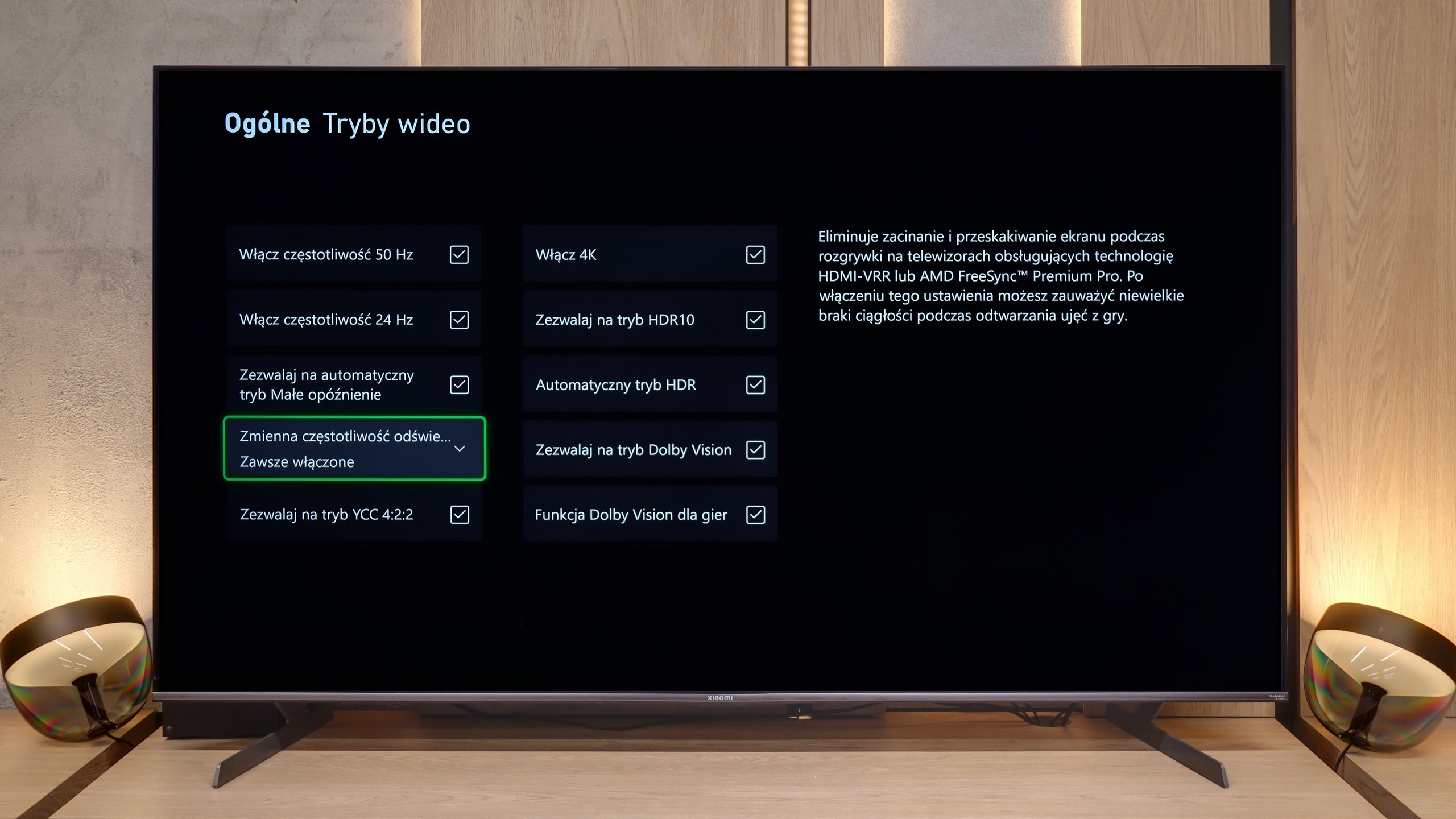

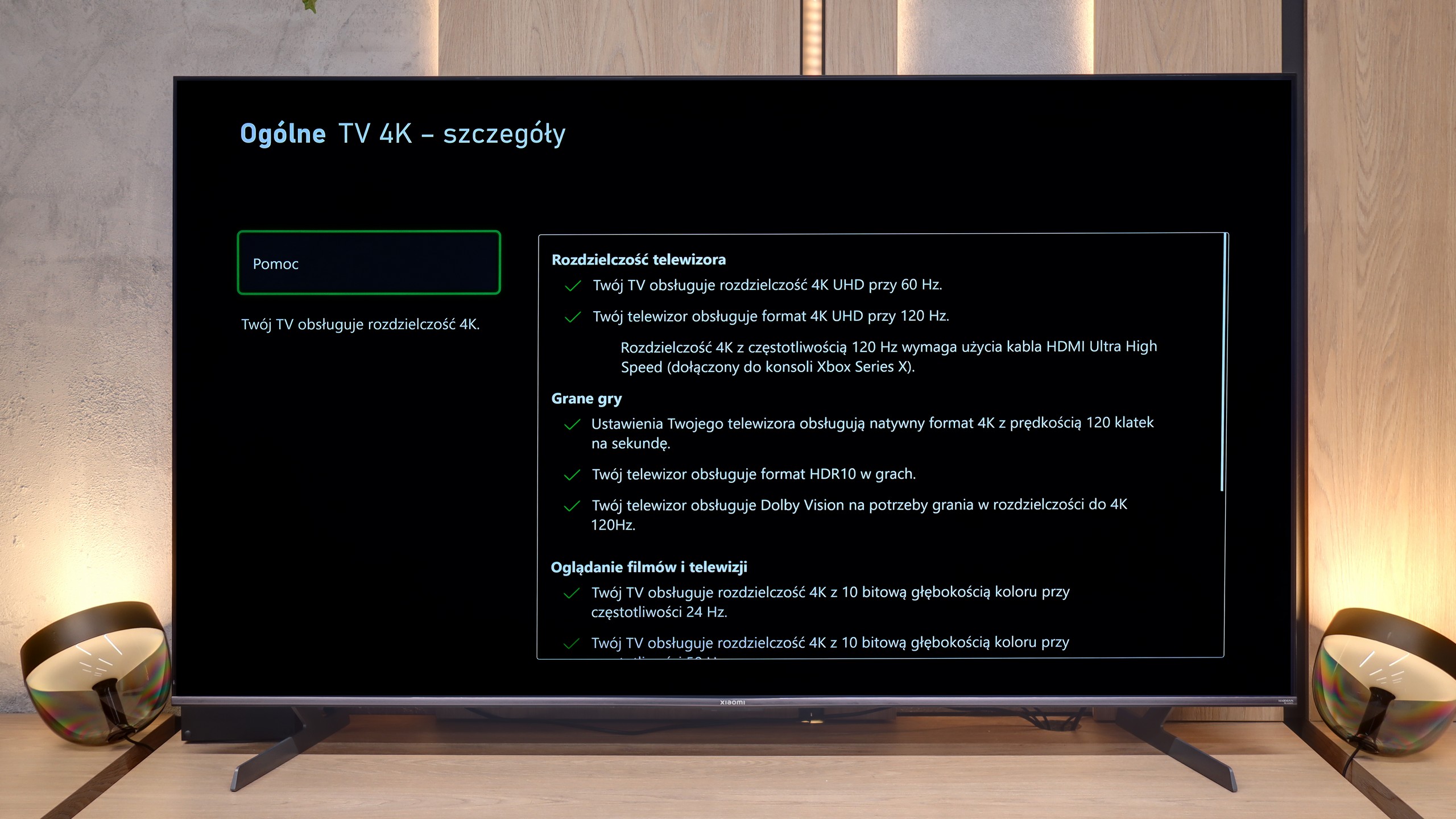



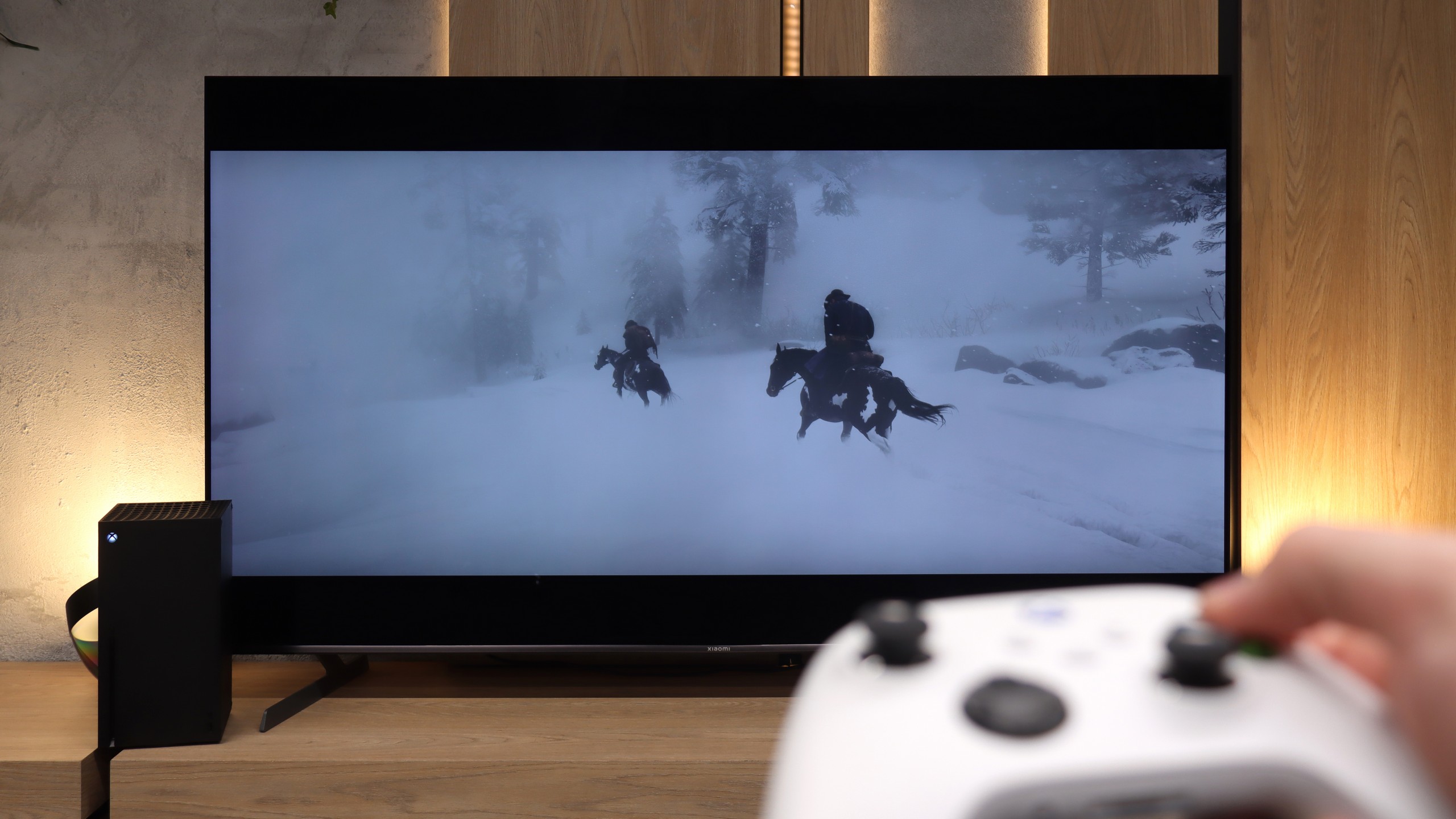
TCL A300 is a television designed not only to transport us to a digital art museum but also to a full-fledged gaming world. It offers practically everything you would expect from gear for gamers: two HDMI 2.1 ports with full bandwidth, 144 Hz refresh rate, VRR support, and ALLM.
The correct implementation of the HGIG mode is also a plus – something that competing Hisense sometimes struggles with. The television easily handles lower resolutions (e.g., Full HD) while maintaining high refresh rates, which will be appreciated by owners of older consoles or PCs.
In addition, there’s an attractive and clear GameBar that facilitates quick access to settings for gamers. The A300 is truly well-prepared for gaming at the highest level – it's just a shame that issues with motion blur slightly tarnish its overall image as a gaming device.
For gamers, the Xiaomi S Pro 2026 is, on paper, an almost ideal proposition. It is equipped with two HDMI 2.1 ports, allowing us to unlock (although these options are somewhat hidden in the menu) the full suite of features: ALLM, VRR, and, crucially, the ability to work in 4K at 144 Hz. This last feature should particularly please owners of powerful PCs. The TV also has something akin to a gaming panel – and while it’s hard to call it a full-fledged "Game Bar," it does its job by displaying key information. It’s just a shame that in its default form, it covers a relatively large part of the screen.
However, our biggest issue with this model concerns how the S Pro 2026 handles gaming in HDR mode. To put it bluntly: it doesn’t handle it well. Due to the poorly implemented HGiG function (the HDR tone mapping standard for games), during the initial HDR calibration on the console, it’s very easy to "blow out" the image. If someone is unaware of this software flaw and follows the on-screen instructions, they will simply set the image incorrectly, with burnt-out details in bright areas. Another major problem is the Dolby Vision mode for gaming. While it does work, it generates such a high input lag that it becomes noticeable in dynamic titles. (All our latency measurements can be checked in the paragraph below). In summary: generally, it’s a really good screen for gamers, but with one small caveat. We would rather avoid HDR mode on it – unless we decide to manually adjust the brightness bar on the console "by eye," completely ignoring the instructions from the console's pictogram.
Input lag
9.7/10
8.5/10
SDR
HDR
Dolby Vision
In terms of input lag, the TCL A300 performs really well. Values below 10 ms at a 120 Hz refresh rate are something many gamers dream of – such low lag is practically imperceptible, both during everyday gaming and in more demanding esports titles. One could indeed point out the result of 23 ms in Dolby Vision mode at 60 frames, but it is still a low enough value that it's hard to have serious objections. In this category, the A300 truly excels.
We move on to one of the most important measurements for gamers, which is input lag. Overall, the Xiaomi S Pro 2026 performs exceptionally well in this regard. Generally, in game mode, the lag is very low. With 120 Hz content (from consoles or PCs), we easily achieved results below 10 ms. These results are truly remarkable and practically imperceptible for most people, even those very sensitive to it. Unfortunately, there is one "but" that poses the greatest issue with this model in gaming. We are talking about the Dolby Vision Gaming mode. When this mode is activated, the input lag rises to an astronomical level of around 100 ms. At such a value, the delay between our movements on the controller (we tested on an Xbox console) and what is displayed on the screen becomes really very large and annoying. Therefore, our recommendation is simple: we absolutely do not recommend using Dolby Vision Gaming mode on this television.
Compatibility with PC
8.2/10
8.6/10

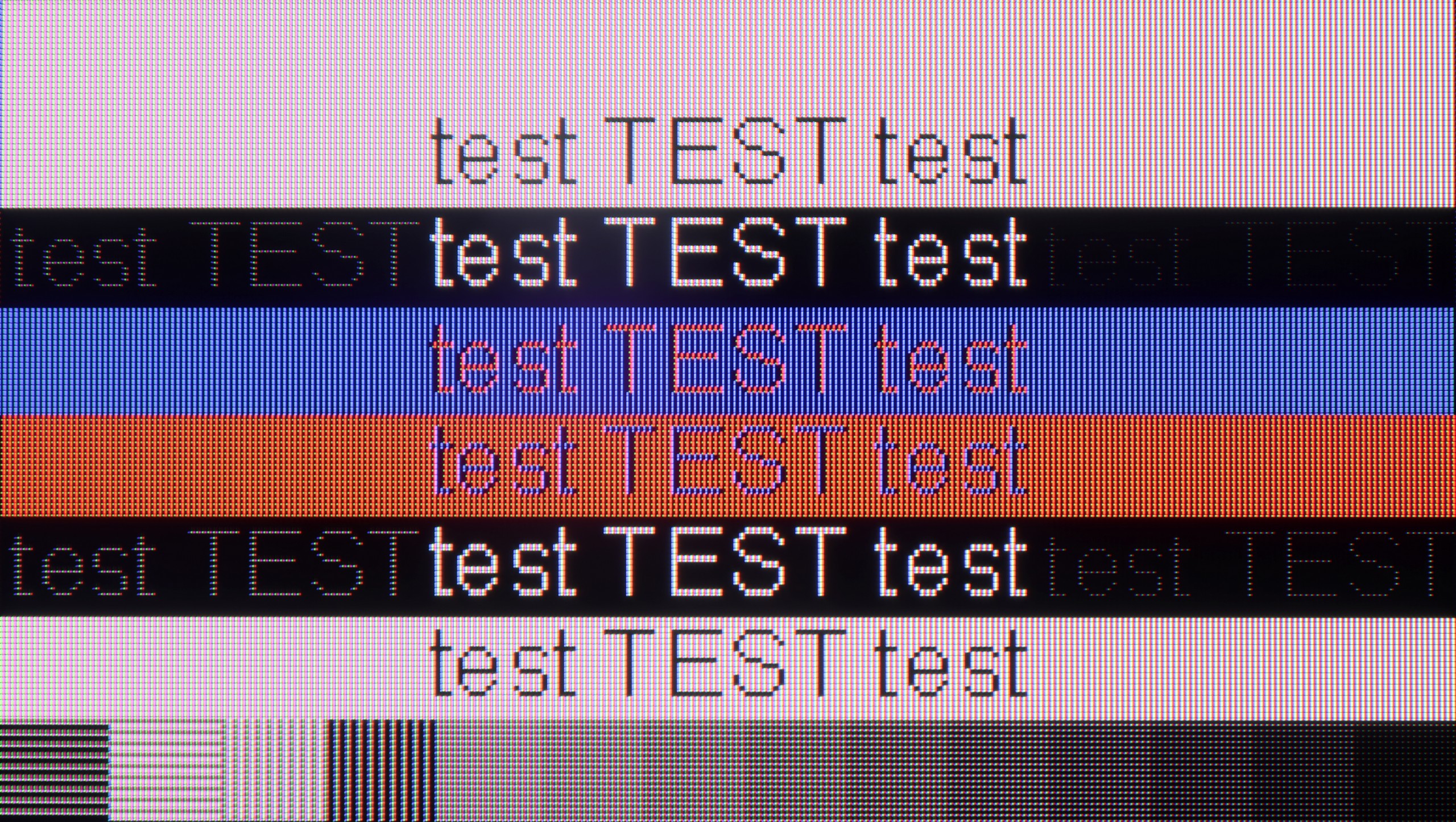
If we plan to use the TCL A300 as a monitor for a computer, we may be pleasantly surprised. The television performs really well in this role. It is equipped with a 144 Hz panel, supports G-Sync, and, as we mentioned, offers very low input lag, so gaming on it with a connected PC is pure pleasure.
Working with text is also possible, although with some limitations. The TCL A300 has slight issues displaying dark fonts and thin lines – this stems from the structure of the subpixels, which can be somewhat bothersome in everyday use, even though it looks better in pictures than in reality.
The television supports chroma 4:4:4, but only up to 120 Hz. That's why we noted that this feature is available, but with a limitation – if we care about perfectly legible fonts, it's worth sticking to a refresh rate of 120 Hz. At 144 Hz, the sharpness of the text may suffer slightly.
Generally, when it comes to gaming, the S Pro 2026 is a great screen for PC owners. It offers a refresh rate of up to 288 Hz in Full HD resolution or a full 144 Hz in 4K. All of this, supported by technologies like AMD FreeSync and G-Sync, is really a lot for very demanding gamers. And how about "desktop" work? Here we have positive news as well. Although the displayed font may not be perfectly sharp (like on a dedicated PC monitor with an IPS panel), it is presented in a really pleasant and readable way. This is due to the proper implementation of Chroma 4:4:4 sampling, which ensures that text is clear and there are no issues with color fringing.
Viewing angles
3.2/10
3.7/10
The viewing angles on the TCL A300 NXTVision are – let's be honest – average. The television is equipped with a VA panel, which inherently has quite limited angles, and unfortunately, you can clearly see that here. The film below speaks for itself – even a slight deviation from the axis results in a noticeable drop in contrast and color saturation. It’s a pity that this is another frame-style television that hasn’t done anything about it. After all, we don’t always have the option to sit perfectly straight in front – especially if the device is also meant to serve a decorative function in the living room.
As for a TV equipped with a VA panel, we must admit that the drop in brightness when viewed at an angle is relatively small in the Xiaomi S Pro 2026. However, it is important to keep in mind a second, key aspect – color saturation degrades significantly at an angle. This is typical behavior for TVs with a VA panel that do not have additional coatings to widen viewing angles. Is this a flaw of this TV? Not really. It is simply a characteristic, the price we have to pay for the key advantages of a VA panel in the form of its high native contrast.
Daytime performance
4.7/10
7.4/10

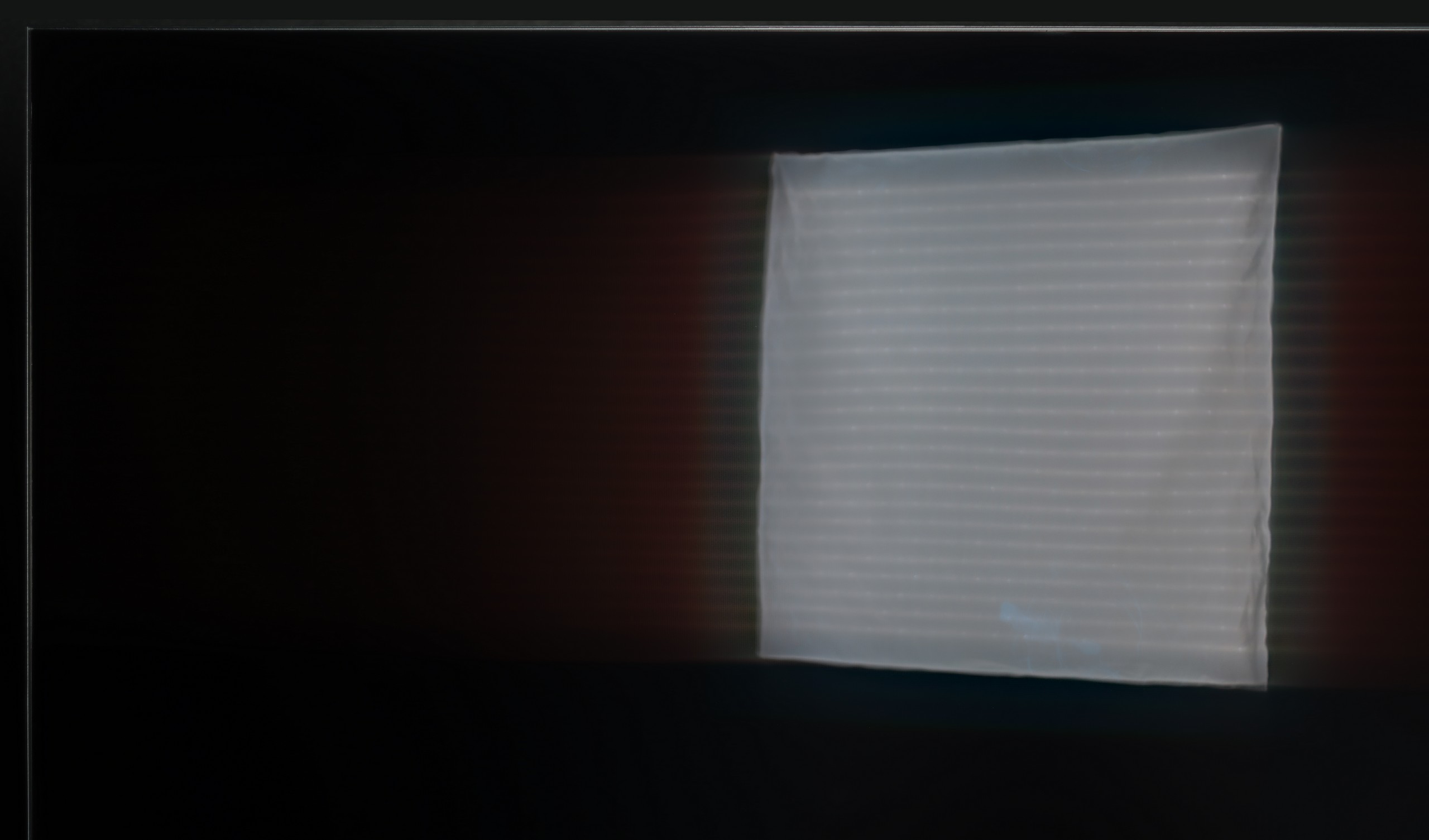


Panel brightness
Average luminance SDR
Xiaomi S Pro 2026: 771 cd/m2
TCL A300W NXTVision: 388 cd/m2
The TCL A300 NXTVision is equipped with a matte panel very similar to the one found in one of its Chinese competitors – the Hisense S7NQ model. Such a surface does quite well in suppressing reflections, although it must be admitted that it performs worse than Samsung's The Frame, which offers a definitely higher level in this respect. As is often the case with matte displays, blacks during the day lose depth and appear more gray than black – and this is no different here. Unfortunately, the fact that the A300 is the darkest television among the tested trio does not help either. As a result, it has a real problem standing out in heavily sunlit rooms.
Due to its very high peak brightness, the Xiaomi S Pro 2026 performs really well in brightly lit rooms. In most scenarios, it is able to "break through" even very strong lighting in the room. However, it should be noted that the matrix used here quite poorly suppresses reflections. This means that in darker areas of the image, or when the TV is displaying a dark scene, direct reflections (e.g., the reflection of a window or lamp) can be annoying. Nevertheless, the S Pro 2026, as a TV for a bright living room, performs really well thanks to its powerful brightness.
Panel details
Subpixel Structure:
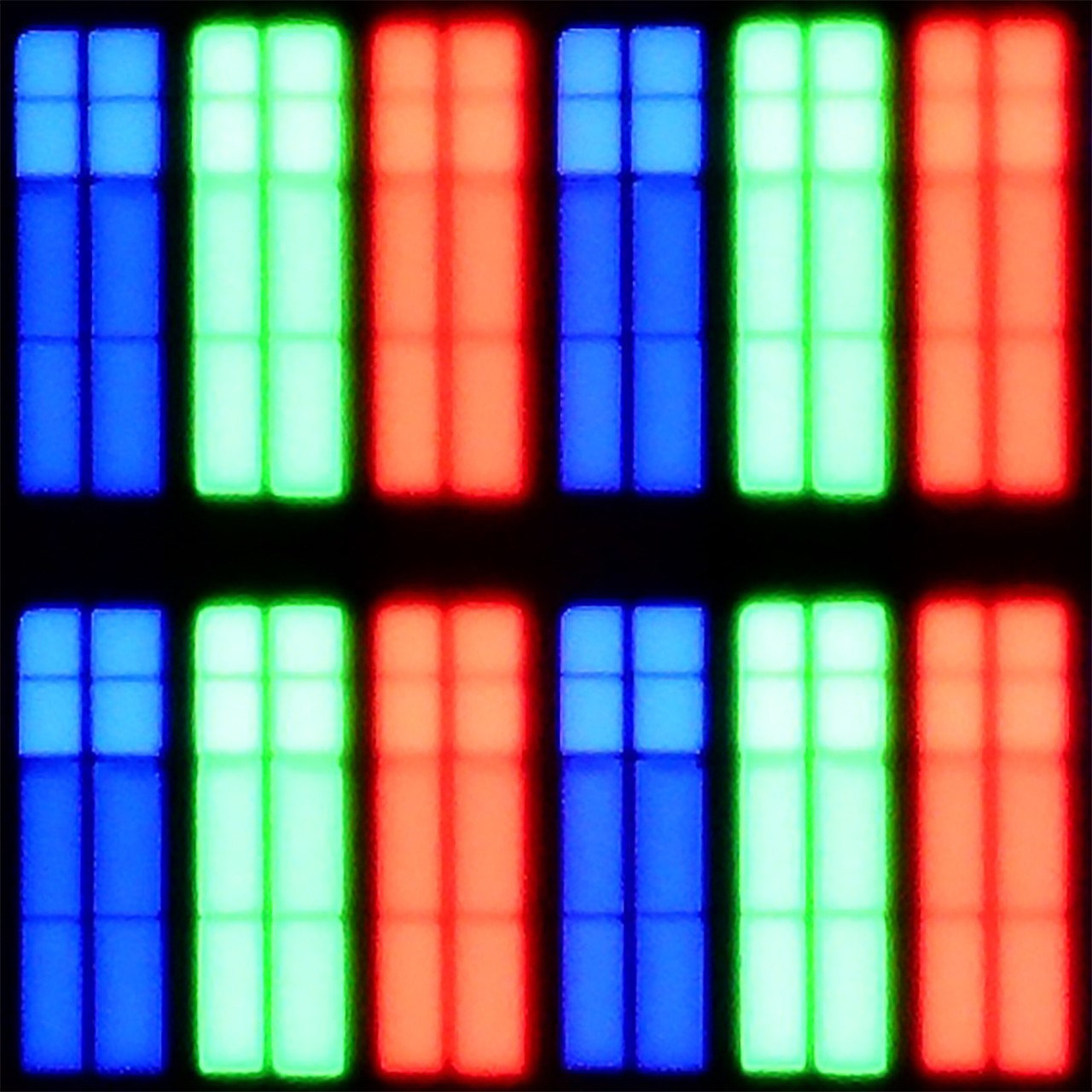
Panel uniformity and thermal imaging:


TCL A300W NXTVision
Xiaomi S Pro 2026
TV features
7/10
7.2/10
- HDMI inputs2 x HDMI 2.0, 2 x HDMI 2.1 48Gbps1 x HDMI 2.0, 2 x HDMI 2.1 48Gbps
- OutputsToslink (Optical audio), eARC (HDMI), ARC (HDMI)Toslink (Optical audio), eARC (HDMI), ARC (HDMI), Mini-Jack (Headphones)
- Network InterfacesWi-Fi 2.4GHz, Wi-Fi 5GHz, Ethernet (LAN) 100MbpsWi-Fi 2.4GHz, Wi-Fi 5GHz, Ethernet (LAN) 100Mbps
- TV receptionDVB-T, DVB-T2, DVB-S, DVB-S2, DVB-CDVB-T, DVB-T2, DVB-S, DVB-S2, DVB-C
Classic features:
- Recording to USB (terrestrial TV)
- Recording programming
- Picture in Picture (PiP)
- RF remote control (no need to aim at the screen)
- Backlit remote control
- Teletext
- Audio only mode
- Bluetooth headphones support
- Simultaneous Bluetooth headphones & TV audio
Smart features:
- AirPlay
- Screen mirroring (Windows Miracast)
- Voice search
- Voice search in native language
- Ability to connect a keyboard and mouse




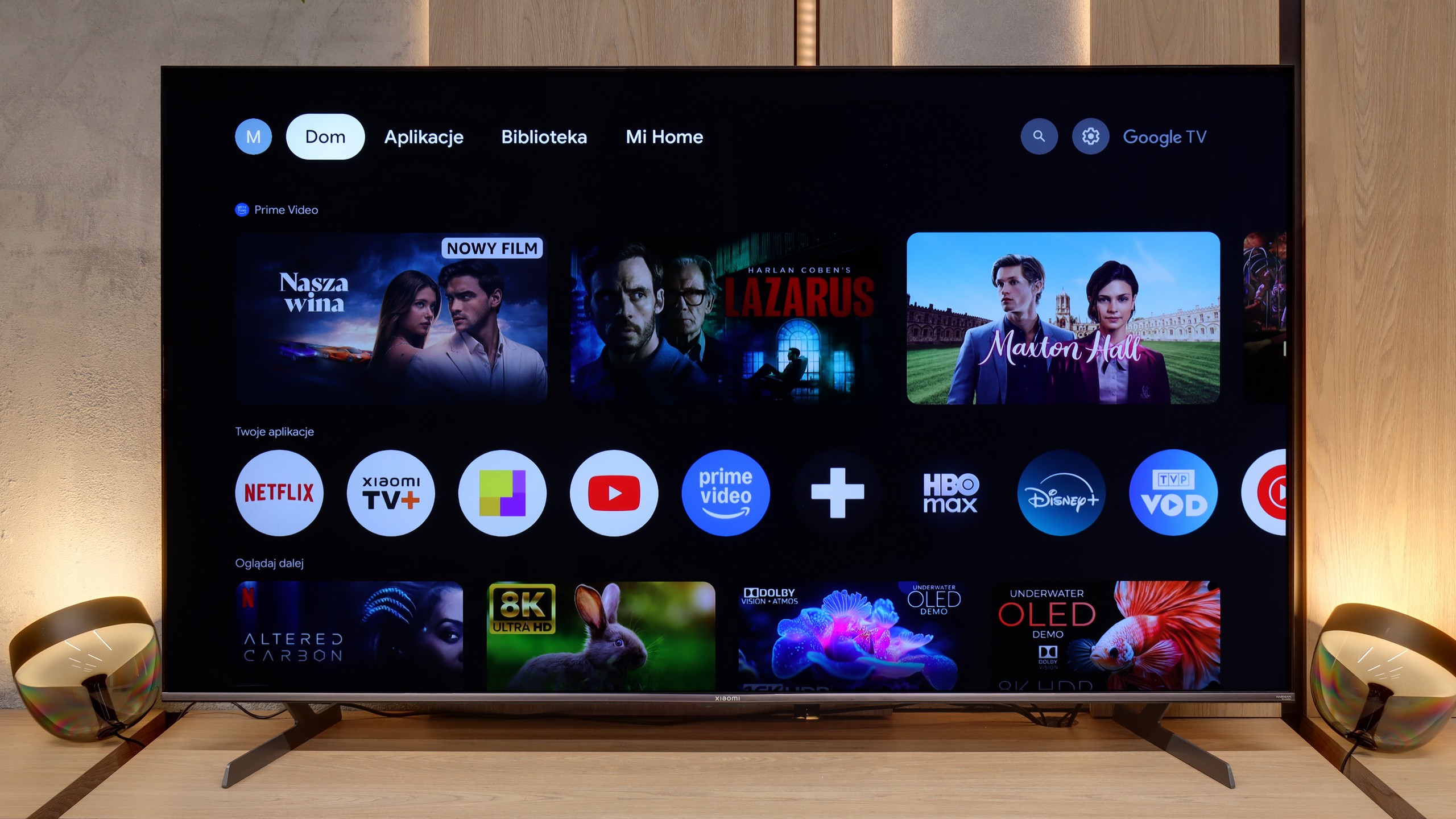
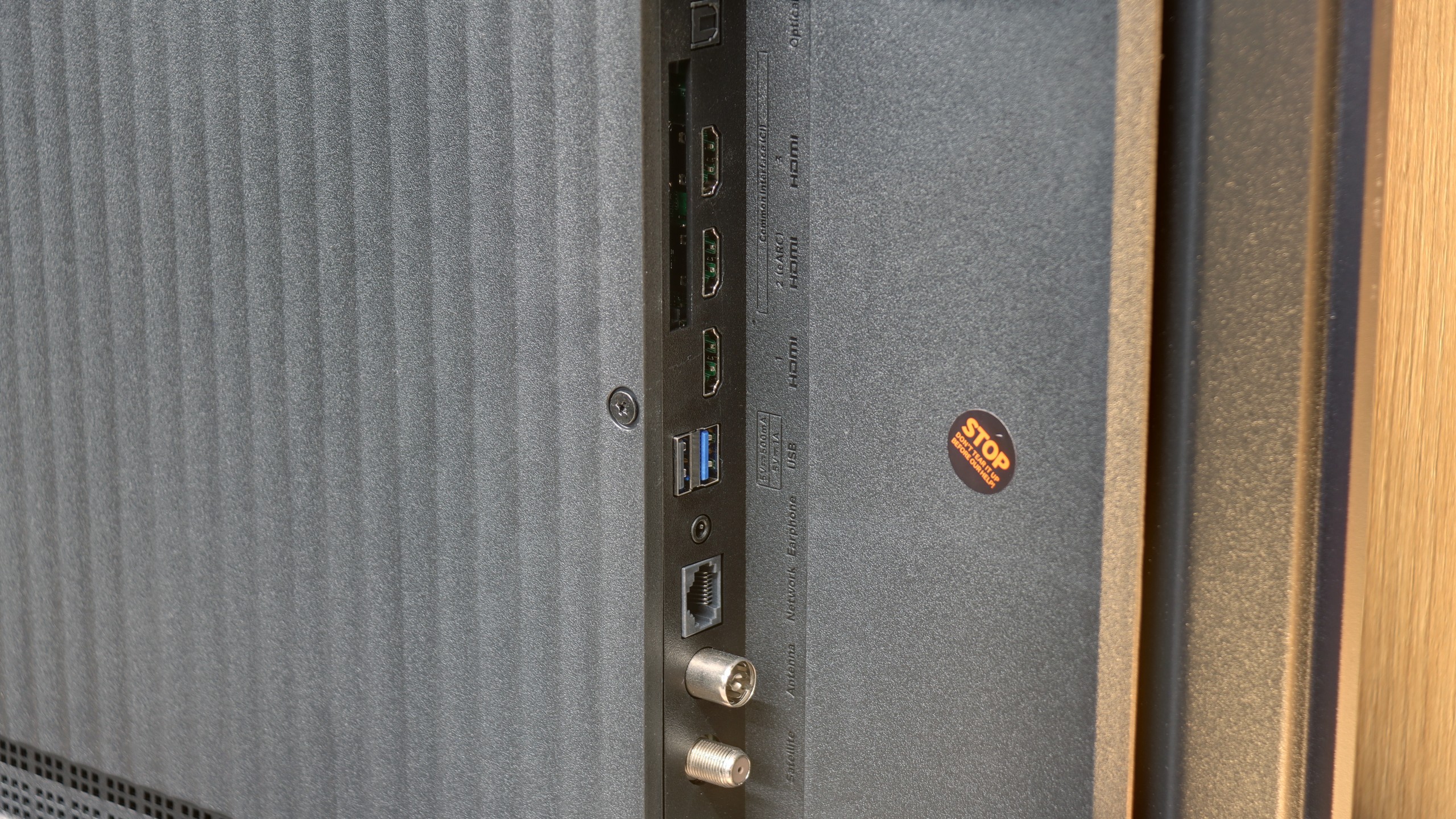

TCL A300 is a television styled like a painting, which in everyday use can successfully imitate a work of art hanging on the wall. It is equipped with a special image display mode, additional frames in a light wood tone, and a flat wall mount that allows the TV to be hung like a real painting – flush against the wall.
A significant advantage of the picture mode is that it is completely free. We have access to dozens of artworks from which we can choose what should be displayed in standby mode – instead of a black screen, the image selected by us stays on the wall. The quality of the graphic reproduction is decent, but it must be admitted that it clearly falls short compared to that of Samsung's ART Store. Although access to the images there is paid, the quality of the scans is significantly better – you can see the texture of the paint, canvas, and details. In the TCL A300, it resembles high-quality photos more than realistic reproductions of artworks. Additionally, the implementation of the picture mode in the system leaves much to be desired. For example – if we set the brightness in picture mode to 10%, this same value automatically transfers to the regular viewing mode, where we could easily set the brightness to 50% or even 100%. It also works the other way around – when we set the brightness to 100% in regular mode, after switching to gallery mode, the images are displayed with that same maximum brightness, shining too intensely and losing the entire effect of "a picture on the wall." These are minor but annoying errors that can ruin the impression of what was supposed to be visually subtle and elegant.
Moving on to more classic features – the A300 runs on the Google TV system, which currently offers by far the largest selection of applications (full list available below). The well-functioning voice assistant with support for the Polish language is also a significant plus. As is standard – as in most TCL televisions – there is a lack of USB recording functionality or picture-in-picture (PiP) mode.
Operating System (Google TV)
A significant advantage of the Xiaomi S Pro 2026 is undoubtedly the presence of the Google TV system. This gives us access to a massive library of applications – we can find literally everything here, from leading VOD platforms to niche players. The system also offers a multitude of useful features, such as built-in Chromecast, support for AirPlay and Screen Mirroring, and an efficiently working voice search. The Google TV system itself is great, but one must take a slight caution regarding its implementation by Xiaomi. During our tests, it experienced a proverbial "hitch." Animations could lag a bit, and the response to commands wasn't immediate. This is definitely not the level of fluidity that we know from top, significantly more expensive models equipped with more powerful processors.
TV Features and Connectivity
So how does the S Pro 2026 perform as a "conventional" television? Unfortunately, we have less good news here. In terms of classic TV viewing, we can mainly praise this model for having a convenient remote control with a numeric keypad – which (surprisingly) is not a standard today. However, this is where the conveniences end. We won't find either USB recording (PVR) capabilities or PiP (Picture-in-Picture) options. On the plus side, we credit the extensive Bluetooth connectivity options. We had no trouble connecting external devices to the TV, such as wireless headphones, a keyboard, or a mouse, which significantly facilitates operation.
Playing files from USB
8.9/10
6.8/10
Supported photo formats:
Maximum photo resolution:


The built-in player in the TCL A300 works as it should – most popular video and photo files play without any issues. Although it lacks support for the HEIC format from Apple (which is quite common in many TVs), most users still rely on the AirPlay feature, so it shouldn't pose a major problem. If someone is not satisfied with the default player, the Google TV system offers considerable options – it's easy to install an alternative app that better matches our preferences. Nonetheless, it must be admitted that the factory solution is completely sufficient for everyday use.
The built-in, default media player in the Xiaomi S Pro 2026 is – given the capabilities of the Google TV system – simply weak. Its biggest drawback is that it does not support characters other than those from the standard alphabet. Consequently, it does not display, among other things, Polish fonts in subtitles or file names. Fortunately, as we mentioned before, the heart of the television is Google TV. This system allows for the instant installation of an external, significantly better player, such as VLC or Kodi. For this television, we recommend installing an alternative player immediately after the first startup.
Apps
9.6/10
9.6/10














































Sound
6/10
7.1/10
- Maximum volume-82dB
- Dolby Digital Plus 7.1
- Dolby True HD 7.1
- Dolby Atmos in Dolby Digital Plus (JOC)
- Dolby Atmos in Dolby True HD
- DTS:X in DTS-HD MA
- DTS-HD Master Audio
When it comes to sound, the TCL A300W – like its competitors – sounds quite... flat, after all, we are talking about a super slim TV. For everyday watching of news or series, this level is completely sufficient, but during movie screenings, it may clearly lack depth and space. On the plus side, it’s worth noting that the TV supports both Dolby Atmos and the increasingly rare DTS:X – which provides more options when connecting an external audio system. It’s also worth mentioning that the A300 PRO model is equipped with a dedicated, flat soundbar. And it's no ordinary one – it sounds better than most of the TVs we tested.
We must admit that the S Pro 2026 surprised us quite positively. The television is equipped with a 30W speaker system that, for its class, sounds really very good. There is even a noticeable slight hint of bass, and the mid and high tones are quite well balanced. Of course, all of this is within the capabilities provided by the television's speakers, but it is a level we did not expect from such a relatively inexpensive model. A huge plus is also the support for top audio technologies. The television is capable of decoding not only the very popular Dolby Atmos format but also the recently quite rare DTS:X, which we mainly find on Blu-ray discs.
Sound Quality Test
No sound test video
Acoustic Measurements
No acoustic data
82dBC (Max)
75dBC
